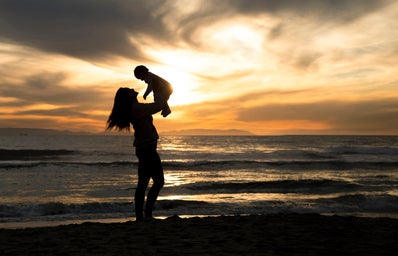With every country, there are social and societal norms and taboos that are put in place and exist as ways of navigating the daily lives within the culture of any given place. An example of one of these topics is that of motherhood and how, from the moment a child is brought into this world, they are cared for to the standards of the parents and family and the society they identify with and inhabit.
One factor that goes into the months and/or years after childbirth is that of maternity leave. This determines the sacred time a mother or a father can spend with their child up until they are torn apart and must return to the grueling dynamics of the workplace and capitalism. This pivotal period allows for the crucial parent-child relationship to blossom and develop, creating a foundation for healthy adolescence and continued growth into adulthood.
With that being said, many governments do actively acknowledge how important this is, with more than 120 countries around the world providing paid maternity leave and health benefits by law. However, as you will see from this list, many countries, including the one you are most likely reading this article in, do not advocate, support or ensure that this time period is protected, uniform or present in their governments, leaving many mothers and fathers with limited time, options and resources at such a fundamental period in their life story.
- The United States: 0 weeks
-
Coming in first on my list we have the ultimate downfall of the Western world: the United States. As a country that is a self-proclaimed champion in all things freedom and human rights, the United States is the only country in the developing world that doesn’t guarantee any paid maternity leave for mothers and fathers, according to The Organization for Economic Cooperation and Development.
They instead leave it up to the employers to determine the most appropriate time period length, resulting in around 40% of American businesses not offering any paid maternity leave to their employees at all.
- Bulgaria: 58.6 weeks
-
On the other end of the maternity leave spectrum, we have the Eastern European country of Bulgaria. This government gives mothers 58.6 weeks of maternity leave—more than a year—at a pay rate of 78.4% of their full-time salary. This gives them a total of 45.9 weeks off with full-time pay giving plenty of time for relationships to form and children to develop right alongside their parents.
- Sweden: 68.5 weeks (shared)
-
One unique maternity leave case can be found in the Scandinavian country of Sweden. Not only is this the home of ABBA, delicious Swedish meatballs and the birthplace of IKEA, new parents in the country are also granted 480 days of leave at 80% of their full-time salary after the birth of their child.
However, what makes this policy even more unique beyond the number of days, is that 18 weeks of leave are reserved for the mother on top of it, and 90 days are entirely reserved for the father allowing for both parents to develop a bond with their child. After this, the parents can split up the time however they wish to do so, promoting equality and overall wellbeing within the household.
- Chile: 18 weeks
-
Looking at the continent of South America, we have the beautiful country of Chile. New Chilean mothers are given 18 weeks of maternity leave at 100% of their full-time salary on top of six weeks before the birth of their child for preparation and settling. This seems to be about the average time period given around the world for maternity leave with obvious outliers as stated above.
- Japan: 14 weeks
-
Heading over to Asia, we can see the island country of Japan, whose government offers 14 weeks of maternity leave at 67% of their previous salary. I had to include Japan due to their recent issues with low birth and marriage rates that are directly impacting the age distribution of their population.
As reproduction and relationships are no longer a top priority in the country’s society, and the Japanese lifestyle allows for high life expectancy, they saw the amount of their population at or above 65 years of age come in at 28% in 2019. This is a number that is only growing, leaving maternity leave as a topic of little discussion.


